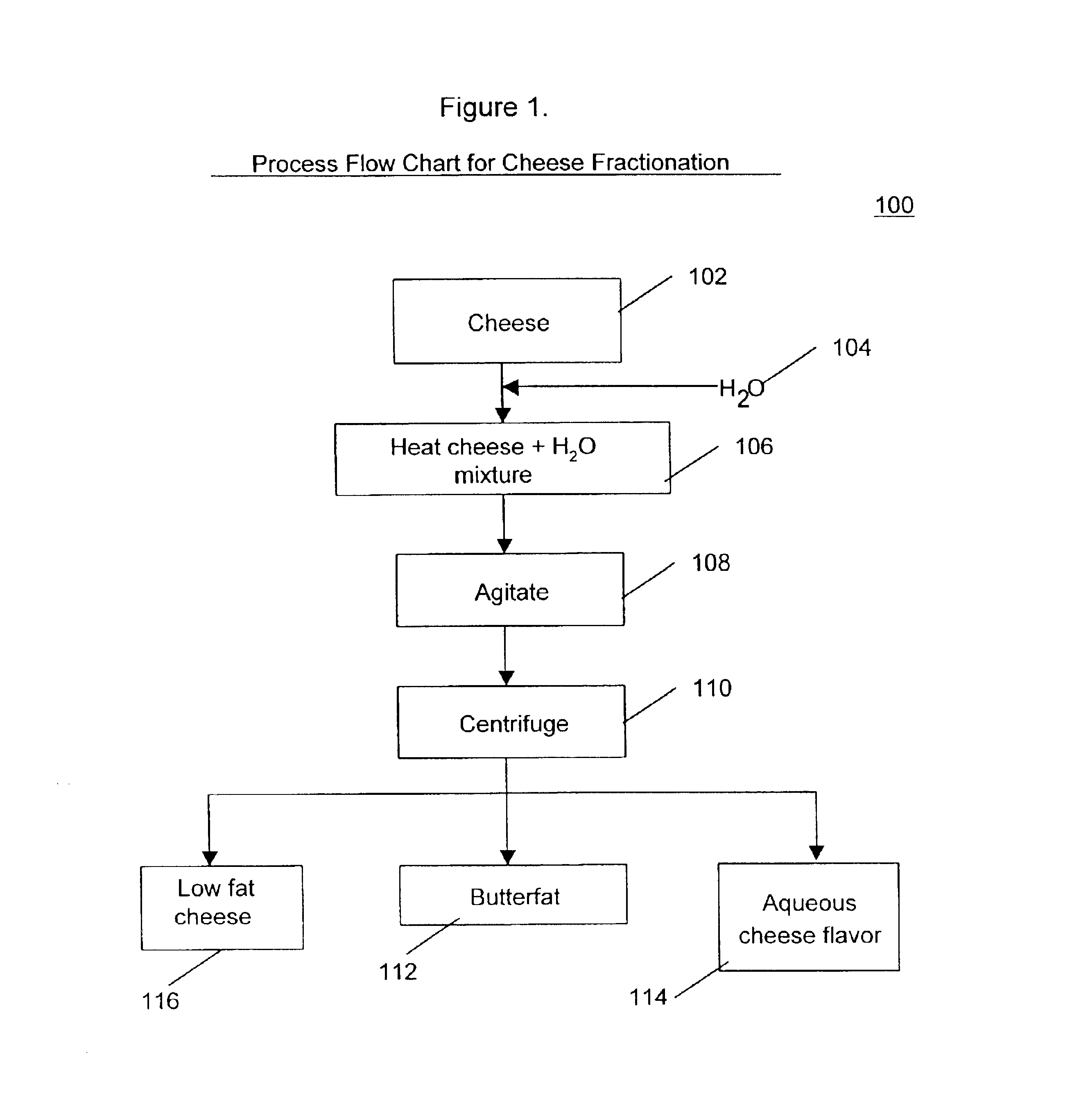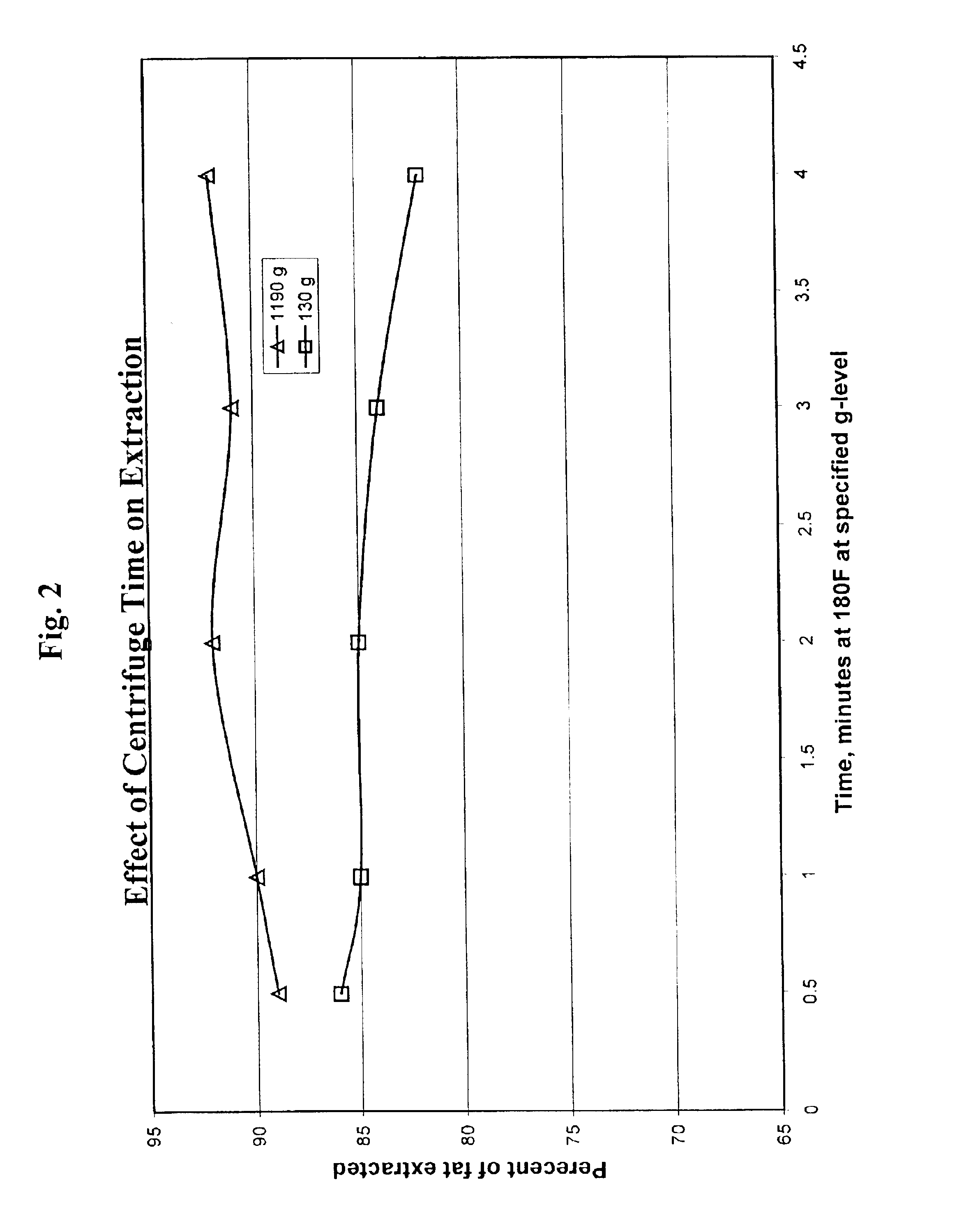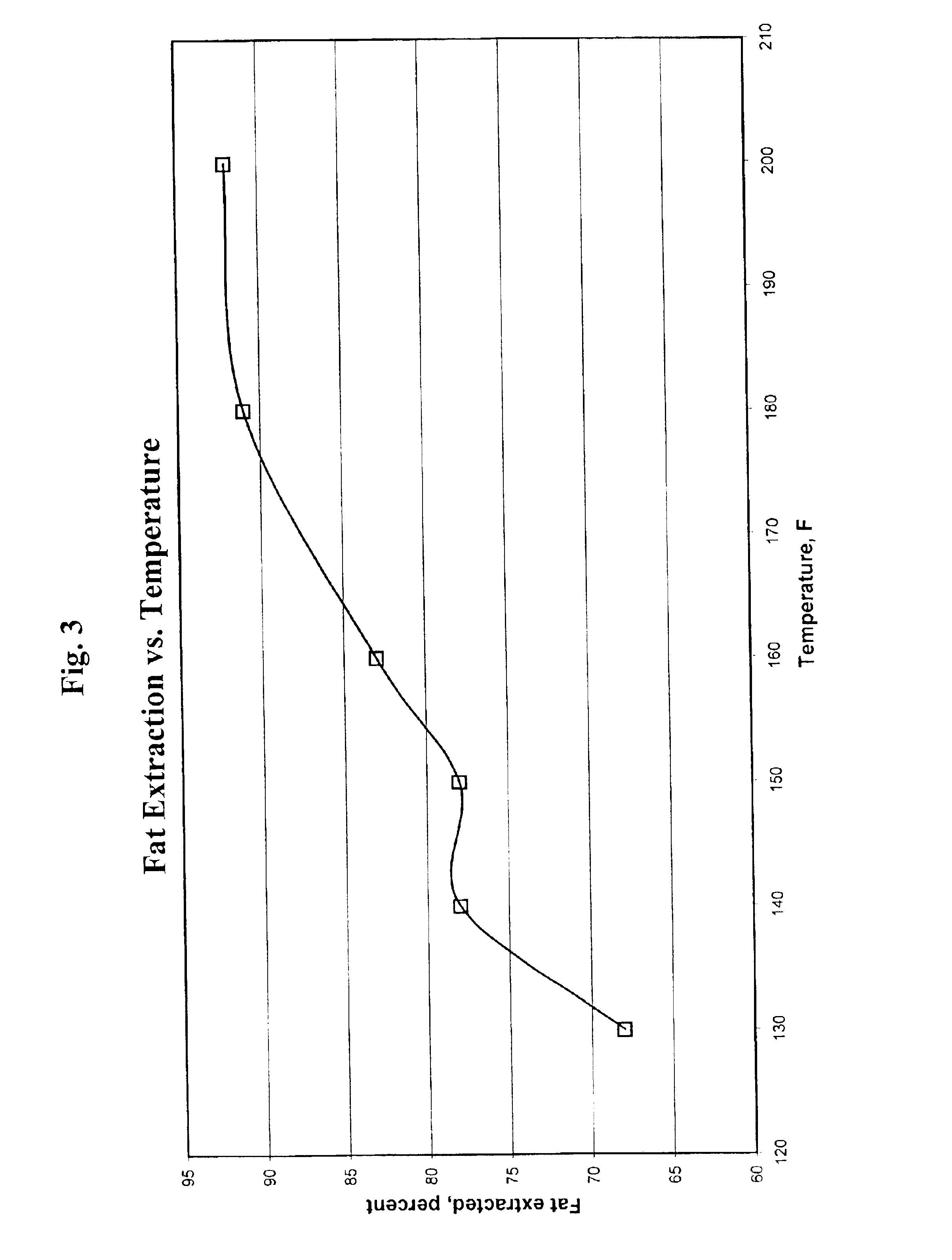Cheese fractionating process
a fractionation process and cheese technology, applied in the field of cheesemaking methods, can solve the problems of lower yield of process using skim or part-skim milk, undesirable rubbery texture of cheese, and high cost to cheese makers and consumers, so as to reduce fat content and reduce fa
- Summary
- Abstract
- Description
- Claims
- Application Information
AI Technical Summary
Benefits of technology
Problems solved by technology
Method used
Image
Examples
example 2
2-month old Monterey Jack cheese having 28% fat was shredded and stirred at about 150.degree. F. The starting cheese had about 56% fat as a percentage of dry material. After centrifuging for 3 minutes at about 1190 g force, fat as a percentage of dry material dropped to about 24%.
As noted above, there are many ways to practice this invention. Cheese is provided, preferably in a size-reduced form, such as shredded cheese. However, other forms may be used, such as milled cheese, ground cheese, or cheese in a powdered form. What is important is that heat transfer into the cheese is readily accomplished, and that mass transfer of the components of the broken emulsion out of the remaining cheese product is also readily accomplished. These transport phenomena occur more readily in particles and bodies of small size, rather than particles or masses of large size. The manner in which the smaller masses are formed may be varied, but shredding or grinding is preferred.
The cheese of reduced si...
PUM
 Login to View More
Login to View More Abstract
Description
Claims
Application Information
 Login to View More
Login to View More - R&D
- Intellectual Property
- Life Sciences
- Materials
- Tech Scout
- Unparalleled Data Quality
- Higher Quality Content
- 60% Fewer Hallucinations
Browse by: Latest US Patents, China's latest patents, Technical Efficacy Thesaurus, Application Domain, Technology Topic, Popular Technical Reports.
© 2025 PatSnap. All rights reserved.Legal|Privacy policy|Modern Slavery Act Transparency Statement|Sitemap|About US| Contact US: help@patsnap.com



